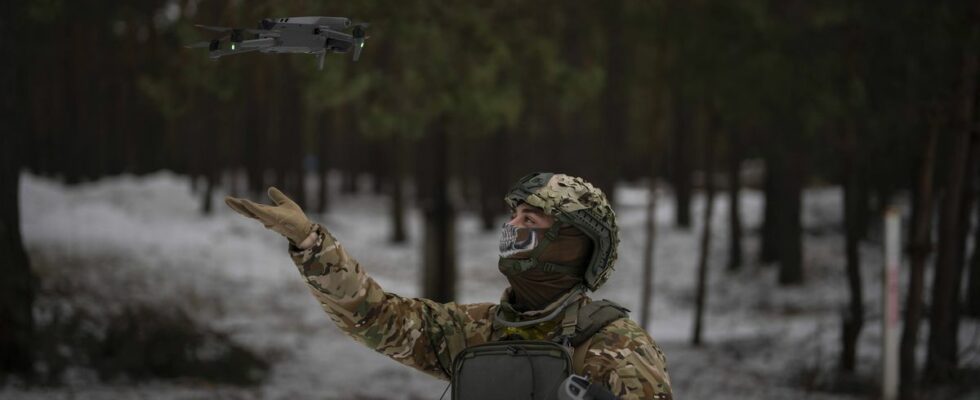From leisure to war, there is only a piece of scotch. Appearing fifteen years ago, recreational drones have experienced a meteoric rise, both in terms of the technological innovations developed, and in terms of their apprehension by the target manufacturers: the general public. Embedded systems now allow anyone to easily control these machines and their mass industrialization puts these little gems within reach of all budgets. It was enough to arouse the interest of the military. Thus, in Ukraine, recreational drones have found their place in the hands of Volodymyr Zelensky’s soldiers, transformed into formidable weapons of war with tape and string.
It is difficult to scroll on social networks without coming across videos of Ukrainian soldiers handling small recreational drones or images captured by the onboard cameras of these civilian devices on the battlefield. Sometimes harsh images, on which we see bodies explode under the impact of a grenade that appeared out of nowhere, dropped by the same drone which also films the scene. These videos, which TikTok strangely does not censor, have also caused the Chinese manufacturer DJI, the world leader in recreational drones, to react: “We are the only drone company to clearly denounce and actively discourage the use of our products in fight”, assures the company to 20 minutes. A damage to its image that DJI has sanctioned by “suspension” of its activities in Ukraine and Russia since April 2022, still in force today.
“Ukrainians spend their time innovating”
However, DJI drones, the most used by the Ukrainian military, have not disappeared from the battlefield. While Mykhailo Fedorov, the Ukrainian Minister of Digital Transformation, called on DJI to denounce the use of its products by the Russian army, at the same time, his ministry posted online the “Army of drones” platform in collaboration with the Ukrainian World Congress. It was to raise funds “to purchase 200 professional unmanned drone systems for aerial reconnaissance” to “support an effective response to enemy attacks”. In addition to raising money, this platform also indicated how to send a drone directly to the Ukrainian army. The “Army of drones” project enabled the purchase of more than 1,400 drones since July 2022, including Mavic 3, Matrice RTK 300 and M300 models from DJI.
The institutionalization of the use of recreational drones on the battlefield by the Ukrainian government was undoubtedly born of the personal initiatives of the soldiers. Videos posted at the start of the conflict show men of Volodymyr Zelensky hang hand grenades or small shells under their drones using a makeshift system: “It’s tinkering, adaptation, and that, the Ukrainian soldiers do it very well”, explains Vincent Desportes, former soldier of the school of war and strategy teacher at Sciences Po Paris. For him, conflicts are fertile ground for innovation: “There is a big difference in conviction between Ukrainians and Russians. The Russians don’t even know why they are fighting while the Ukrainians spend their time innovating, encouraged by their hierarchy. »
What Vincent Desportes qualifies as “feedback” from initiatives in the field is particularly positive on the Ukrainian side concerning the advantage that drones represent. To the extent that “Kryla”, the special unit of the intelligence directorate of the Ministry of Defense, wanted to create a fleet of 1,000 FPV kamikaze drones. “This type of drone has become a truly revolutionary means of combat. […] They are literally used as sniper weapons at a distance of up to 10 kilometers,” says Kryla in a video demonstration. Remote pilot training centers have even opened on the Kyiv side, providing free courses on DJI devices to the military, as pointed out Numerama website. To the chagrin of the Chinese drone leader who pleads for “civilian use only” of his devices. However, while it remains technically possible, DJI has not implemented geofencing that would prevent its drones from flying in Ukraine.

